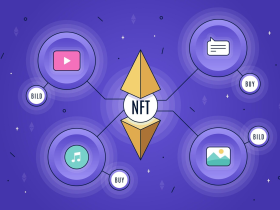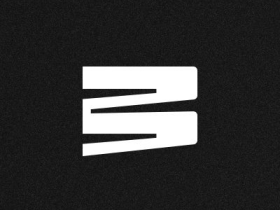The core blockchain network where real transactions take place and the native coin is utilized is known as the “mainnet,” or “main network.”
Basics of the Mainnet
It is a byproduct of development efforts, not to be confused with testnets or experimental environments. The usage of the mainnet’s own cryptocurrency, a virtual asset vital to the network’s functioning, sets it apart. The ecosystem’s staking plans, transaction fees, and governance processes all depend on its local currency.
Blockchain systems typically go through testnet stages prior to mainnet deployment. These test environments allow developers to do experiments without needing real cryptocurrency. When a platform is judged ready, it transfers to the mainnet, where real assets are traded. To authenticate and confirm transactions, the mainnet employs a specific consensus mechanism, like proof-of-work (PoW) or proof-of-stake (PoS).
On the mainnet, validators and miners are necessary depending on the consensus process. Miners that solve complex mathematical challenges on proof-of-work networks are rewarded with bitcoin and are able to validate transactions and add new blocks to the blockchain. However, validators in proof-of-stake networks are selected to build blocks according to the quantity of cryptocurrency they own and are prepared to “stake” as collateral.
Decentralization differs depending on the blockchain network, however it is a basic feature of many mainnets. Further decentralization means that more nodes participate in the validation process. Confirmed transactions are untouchable and safe on the mainnet, making them resistant to manipulation or tampering.
Smart contracts and decentralized apps (DApps) are common features of mainnets that increase the network’s functionality. To address security flaws or enhance functionality, mainnets may upgrade often, which occasionally leads to forks. There are two types of forks: soft forks, which are modifications that are compatible with the past, and hard forks, which are not.
With cryptocurrency wallets, users may send and receive transactions more quickly and interact with the mainnet. Exchanges are vital to the mainnet’s capacity to trade native coins since they provide users with accessibility and liquidity.
How is a Mainnet Operated?
The mainnet of a blockchain platform is made up of a number of crucial components that operate together to process transactions, run the network, and maintain the integrity of the distributed ledger.
The following are a mainnet’s essential components:
Blockchain technology
The mainnet is powered by a specific blockchain protocol that sets the rules and procedures for verifying and adding transactions to the blockchain. Blockchain protocols include Bitcoin (which uses the Bitcoin protocol) and Ethereum (which uses the Ethereum protocol).
Indigenous Cryptocurrencies
A native cryptocurrency exists on every mainnet and is used for various network operations. This includes participating in governance procedures, paying transaction fees, and compensating validators (miners or stakeholders). Bitcoin (BTC) for the Bitcoin mainnet and Ether (ETH) for the Ethereum mainnet are two examples.
Mechanism of Consensus
The consensus mechanism is the process or strategy employed by the network to come to an agreement on the state of the blockchain at that moment. Common consensus mechanisms include proof-of-work (PoW), proof-of-stake (delegated), and other related processes. This mechanism guarantees the legitimacy of transactions and prevents double-spending.
Validators or miners
As previously indicated, in PoW networks, miners solve challenging mathematical puzzles, whereas in PoS networks, validators are chosen based on the amount of cryptocurrency they own and are willing to stake.
Decentralized networks
Nodes are individual computers or servers that are part of the network and maintain a copy of the entire blockchain. To agree on the status of the blockchain at that moment, these nodes communicate with each other. The decentralization and security of the network are improved by a higher number of decentralized nodes.
Smart contracts
Smart contracts are self-executing agreements with well defined terms inscribed in them. Smart contracts are supported on a wide range of mainnets. Smart contracts automate and enforce the fulfillment of contractual commitments without the need for middlemen.
Applications that are decentralized
DApps are blockchain-based applications that provide decentralized functions and services through smart contracts. They regularly interact with the native coin and improve the general functioning of the mainnet.
Wallets
To protect and access cryptocurrency holdings, wallets are necessary. Wallets for cryptocurrencies, which hold users’ private keys and allow them to send, receive, and manage digital assets, are how users engage with the mainnet.
Exchanges
The trading of native cryptocurrencies on the mainnet is made easier by cryptocurrency exchanges. The market is made liquid by users’ ability to buy, sell, and exchange digital assets.
Mechanisms of governance
On several mainnets, users have the ability to vote and make proposals regarding important topics, like changes to protocols. These techniques support decentralized governance and bolster the democratic and community-driven features of the blockchain network.
Mainnet Importance for Consumers and Developers
While giving developers a playground to implement innovations like DApps and smart contracts, the mainnet gives users access to genuine transactions and secure asset handling.
The mainnet is essential to the blockchain ecosystem for both users and developers. The mainnet is viewed by users as the dynamic, real-world environment where genuine transactions take place and where they can use the local currency for a variety of purposes. Because digital assets are guaranteed to be secure and immutable, users can have faith in the integrity of their digital assets.
With cryptocurrency wallets, users may communicate with the mainnet and send, receive, and manage their holdings. The trading and liquidity access platforms offered by mainnet cryptocurrency exchanges give customers more utility out of their holdings.
The best environment for developers to test and implement DApps and smart contracts is the mainnet. It symbolizes the transition from creating and evaluating in controlled environments, such as tests, to applying their discoveries in actual settings. Developers use the mainnet to show off the features and benefits of their blockchain systems.
Additionally, the mainnet’s decentralized architecture and consensus procedures provide a strong foundation for creating secure, public, and unhackable applications. As the center of user activity and creativity, the mainnet fosters the growth and development of the broader blockchain ecosystem.
Mainnet versus Testnet
The mainnet is the live, working blockchain network; the testnet is a virtual environment for cryptocurrency experimentation.
Testnets and mainnets serve distinct purposes in the blockchain development process. Testnets are virtual ecosystems that let developers test and experiment with new features or apps without using actual bitcoin. They offer a risk-free environment for debugging and code optimization.
Genuine bitcoin transactions, on the other hand, take place on the mainnet, which is a live and active blockchain network. With all the benefits and drawbacks of utilizing the production version of the blockchain, it is a real experience.












Leave a Reply